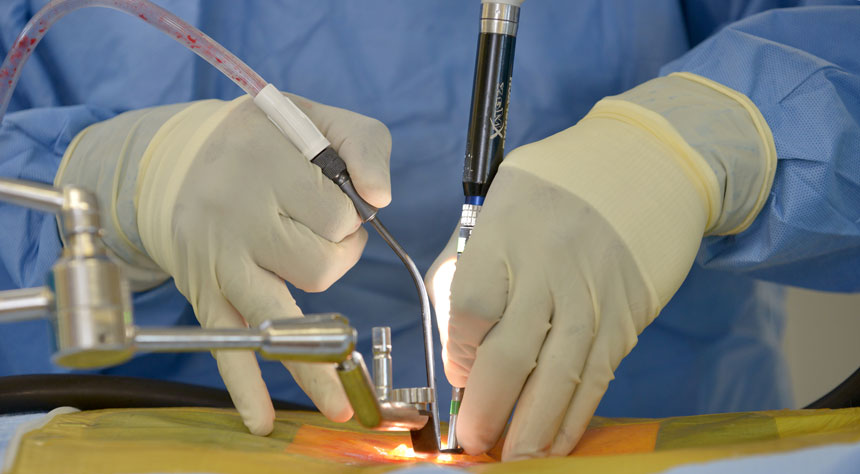
Minimally Invasive Spine Surgery
Traditional “open” spine surgery may require several days in the hospital as it may involve a three-inch long incision, in which muscles and tissues are separated for optimal access to the injury site. The surgery usually results in trauma to surrounding tissues and some blood loss. Because of this the affected tissues and muscles need adequate healing time.
Spine surgery then home, same day
Michael Rohan Spine uses the latest minimally invasive techniques and instrumentation to help patients recover in a shorter period of time and allow for a quicker return home.
Innovative developments in minimally invasive techniques have pioneered better ways for the surgeon to access the spine, moreover making the recovery process more seamless. In minimally invasive spine surgery, a smaller incision is made, sometimes only a half-inch in length. The surgeon inserts special surgical instruments through these tiny incisions to access the damaged disc in the spine.
Entry and repair to the damaged disc or vertebrae is achieved without harming nearby muscles and tissues when using minimally invasive techniques. Minimally invasive spine surgery requires extensive training and experience to master use of the tools, but there is tremendous benefit for the patient.
Comparison: Minimally Invasive vs. Traditional Spine Surgery
| Aspect | Minimally Invasive Spine Surgery (MISS) | Traditional Open Spine Surgery |
|---|---|---|
| Incision Size | Small (typically less than 1 inch) | Large (several inches) |
| Muscle Disruption | Minimal | Significant |
| Recovery Time | Faster (days to weeks) | Longer (weeks to months) |
| Blood Loss | Reduced | Greater |
| Scarring | Minimal | More noticeable |
| Hospital Stay | Shorter (sometimes outpatient) | Longer (several days) |
| Risk of Infection | Lower | Higher |
| Cost | Can be higher (due to advanced technology) | Usually lower upfront |
| Surgeon Expertise Required | High (specialized training needed) | More commonly available |
About minimally invasive equipment and techniques
All of the surgical equipment used in minimally invasive spine surgery must be able to pass through a keyhole-sized portal. These portals are left in during the entire surgery to allow specially designed surgical tools to move freely into the patient’s spinal column and not to damage the soft tissue from exiting and inserting equipment.
When the portal is removed at the end of the surgery, the surrounding soft tissues slowly fall back into their normal place and only require a small amount of stitches to close the area.
Some surgical procedures of MIS of the thoracic spine may require the anesthesiologist to specifically deflate the lung closest to the operating area and the patient will breathe with the other lung throughout the entire procedure. It is considered a very common practice in order to allow more space for the spine surgeon to operate within the thoracic spine.
Dr. Michael Rohan, Jr. is a board certified orthopedic surgeon who is fellowship-trained in spine surgery, the highest level of medical education in the U.S. For over 10 years, Dr. Michael Rohan, Jr. had a prominent spine center on the Florida Gulf Coast with offices in Panama City and Destin before expanding his practice to Northeast Florida with a new spine care location in Middleburg in Clay County, a suburb of Jacksonville in Northern Florida. The Jacksonville practice location is convenient to patients from other cities like St. Augustine, Gainesville, Palm Coast, Daytona Beach and Duval County.
Appointments & Referrals
Phone: 904-204-5000
Make an Appointment
Website Design & All Educational Content © Copyright 2025 Prizm Development, Inc. Developing Centers of Excellence for Better Healthcare. Prizm is the most experienced developer of spine center, joint replacement centers and pain centers in the U.S. with content-rich educational web sites for spine surgeons, neurosurgeons, orthopaedic surgeons and pain management physicians.



